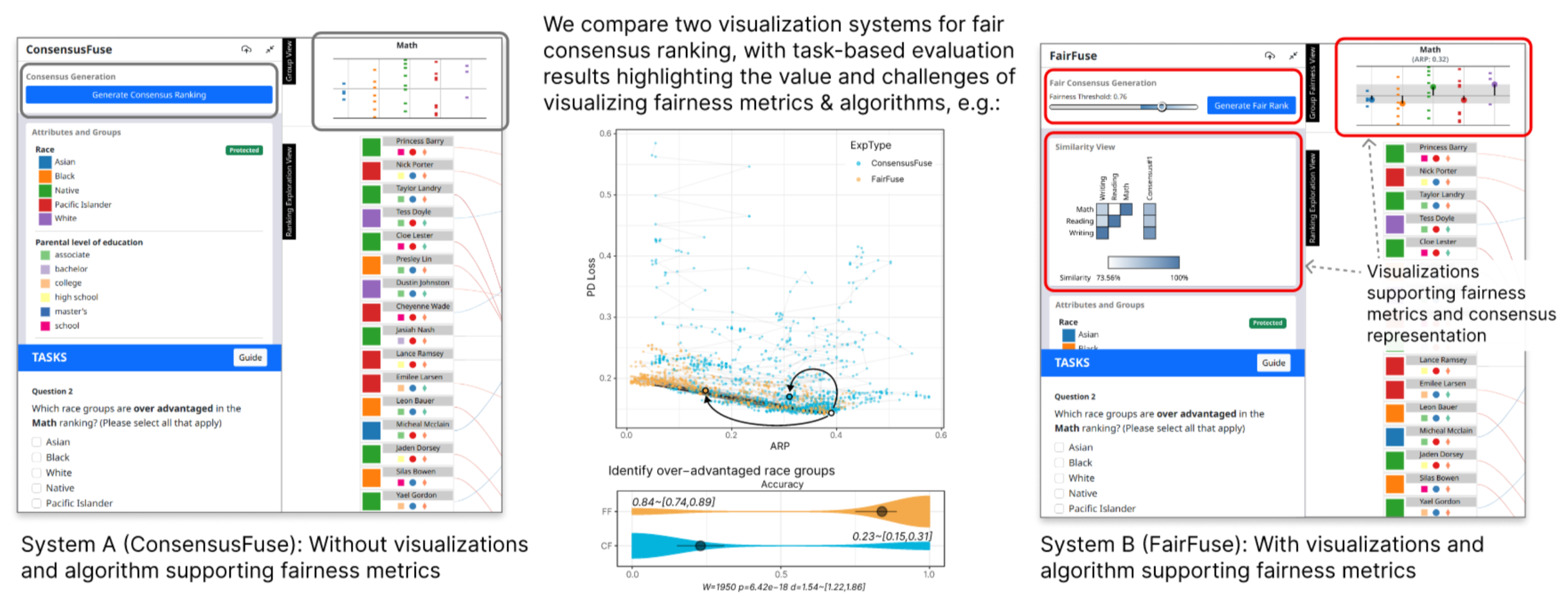Abstract
For applications where multiple stakeholders provide recommendations, a fair consensus ranking must not only ensure that the preferences of rankers are well represented, but must also mitigate disadvantages among socio-demographic groups in the final result. However, there is little empirical guidance on the value or challenges of visualizing and integrating fairness metrics and algorithms into human-in-the-loop systems to aid decision-makers. In this work, we design a study to analyze the effectiveness of integrating such fairness metrics-based visualization and algorithms. We explore this through a task-based crowdsourced experiment comparing an interactive visualization system for constructing consensus rankings, ConsensusFuse, with a similar system that includes visual encodings of fairness metrics and fair-rank generation algorithms, FairFuse. We analyze the measure of fairness, agreement of rankers’ decisions, and user interactions in constructing the fair consensus ranking across these two systems. In our study with 200 participants, results suggest that providing these fairness-oriented support features nudges users to align their decision with the fairness metrics while minimizing the tedious process of manually having to amend the consensus ranking. We discuss the implications of these results for the design of next-generation fairness oriented-systems and along with emerging directions for future research.
BibTeX
@inproceedings{shrestha2023help,
title={Help or Hinder? Evaluating the Impact of Fairness Metrics and Algorithms in Visualizations for Consensus Ranking},
author={Shrestha, Hilson and Cachel, Kathleen and Alkhathlan, Mallak and Rundensteiner, Elke and Harrison, Lane},
booktitle={Proceedings of the 2023 ACM Conference on Fairness, Accountability, and Transparency},
pages={1685--1698},
year={2023}
}

